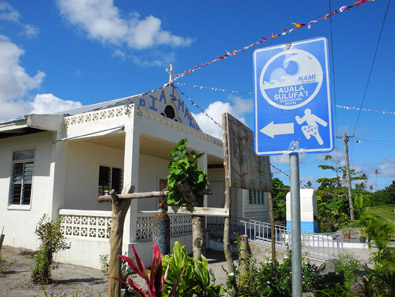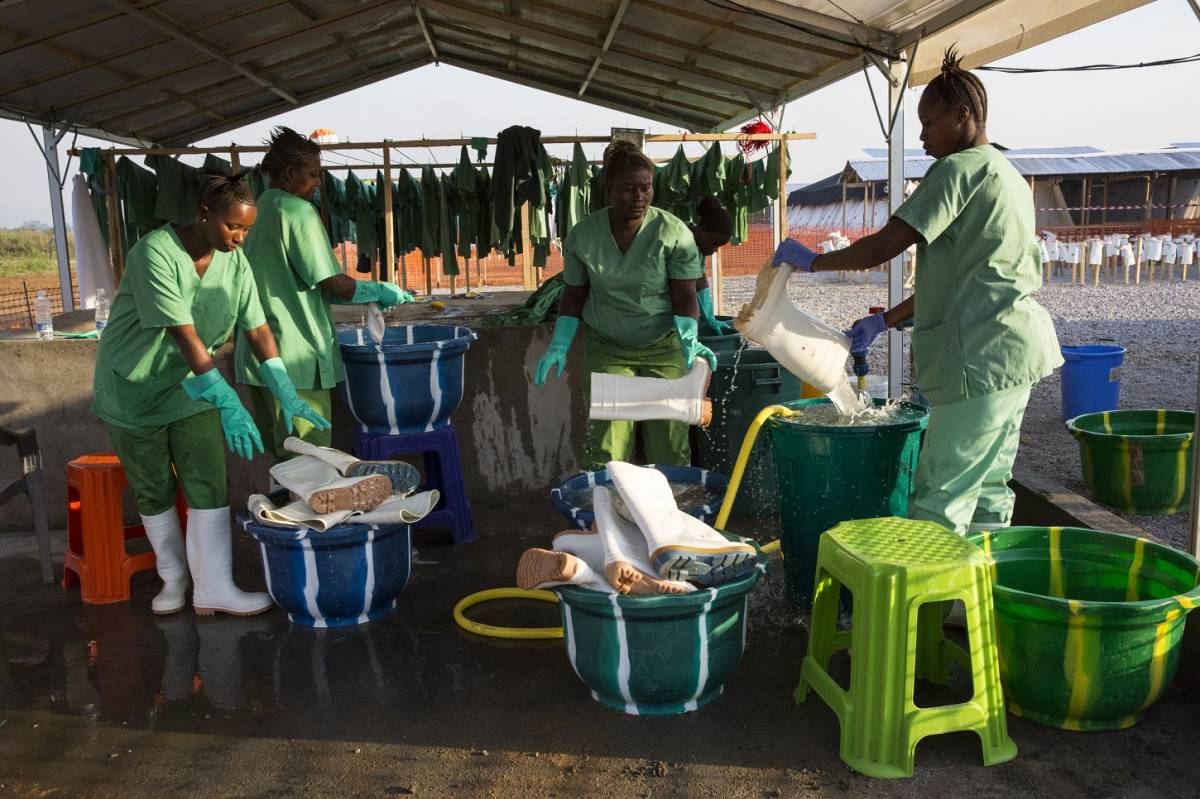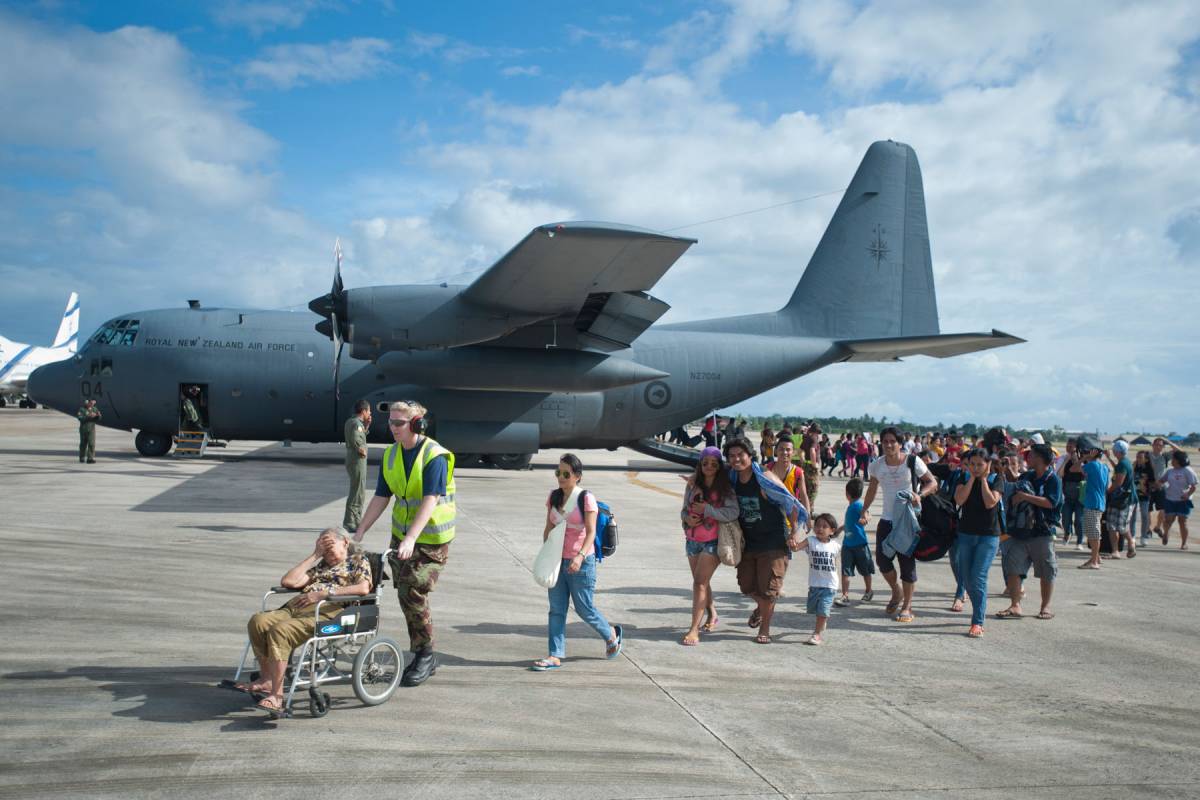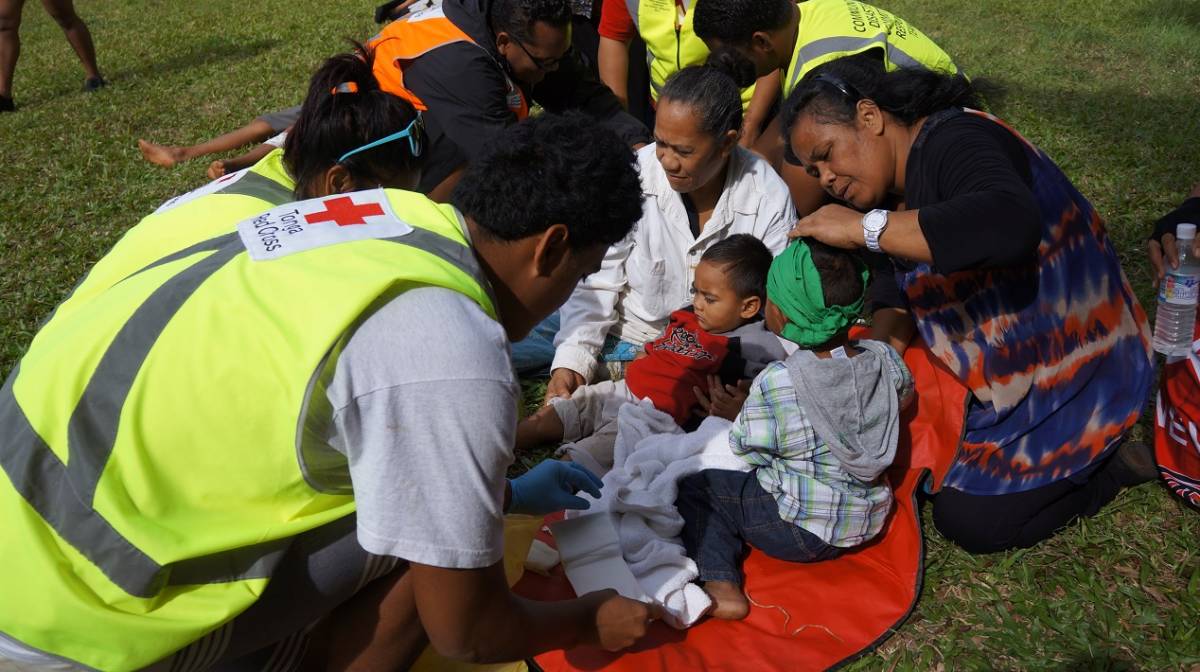On this page
We focus our disaster management efforts in the Pacific and South East Asia regions. Countries in the Asia-Pacific region are among the most vulnerable in the world to natural disasters.
Our response systems are designed to be quick and effective and to deliver practical assistance to those most in need.
We also recognise the value of investing in measures that reduce the risks of disasters and helping countries be better prepared for disasters.
Where we focus our humanitarian aid
Pacific
The Pacific is the core focus of our humanitarian and disaster management efforts. Pacific countries are our closest partners and New Zealand shares close cultural, political and social links with the Pacific. This means we are a trusted partner that can respond quickly in support of Pacific governments when a disaster strikes.

Pacific island countries are among the most vulnerable in the world. They are particularly susceptible to cyclones, floods, droughts, volcanic activity, earthquakes and tsunami. The impacts of climate change and unpredictable weather patterns are exacerbating disaster risk. Small island developing states in the Pacific also face disproportionally high risks to extensive loss and damage due to their small and vulnerable economies. The impact of multiple disaster events can have devastating consequences on the lives of people and their communities, as well as on entire economies for many years.
The Pacific is most vulnerable to natural events during the months of November to May (the Pacific cyclone season).
South East Asia
Much of South East Asia is also considered to be extremely vulnerable to natural disasters including storms (typhoons), landslides, earthquakes and tsunami. The Philippines is considered to be the most cyclone-affected country in the world. In this region New Zealand joins other international humanitarian responders to support affected country governments. An example of this was New Zealand’s practical assistance during typhoon Haiyan in late 2013 – considered the biggest storm recorded in history.
Global

Our humanitarian aid to the rest of the world focuses on supporting the coordinated efforts of other international humanitarian responders including other donors, the United Nations, the International Red Cross Movement and international non-government organisations. The world is facing an unprecedented number of severe and protracted humanitarian emergencies, many caused by conflict. New Zealand will continue to play our part in the world’s most significant humanitarian crises.
How we respond to disasters

New Zealand has excellent capabilities and extensive experience in responding to disasters, building on our own domestic expertise.
New Zealand’s response to a disaster offshore depends on the identified needs at the time and the requests from the affected country government. New Zealand adopts a partnership approach to managing disasters. This includes a ‘whole of Government’ commitment and working closely with the private sector, non-government organisations, the United Nations and other donors.
New Zealand’s assistance can include any or all of the following:
- Providing essential relief supplies such as tarpaulins, water bottles and mother and infant kits
- Deploying medical assistance through specially trained and experienced health specialists from New Zealand in partnership with the Ministry of Health
- Deploying Urban Search and Rescue or other technical assistance in partnership with the New Zealand Fire Service
- Deploying experienced Emergency Management personnel to support affected country governments in partnership with the New Zealand National Emergency Management Agency (NEMA)
- Supporting affected country Governments with logistical and other technical capabilities in partnership with the New Zealand Defence Force
- Providing technical expertise from New Zealand to help re-establish essential infrastructure such as telecommunications, airports and power services for example – often in partnership with the private sector
- Providing financial assistance to the affected Government where appropriate
- Providing financial assistance to NGOs or other local or international responders who are delivering practical assistance to affected communities.
Our partners
To put our humanitarian aid into action, we work with a range of partners. These include other governments, other government agencies, NGOs, the United Nations and private businesses.
Other governments
We work closely with other donor partners to ensure that the New Zealand Government’s assistance supports, and does not duplicate the assistance provided by others. In the Pacific, we have a particularly close partnership with Australia and France. The three partners work closely together to ensure we can use our respective assets and capabilities to the greatest and most useful effect.
New Zealand government agencies
Through our ‘whole of government’ approach to disaster response in the Pacific, we work with other New Zealand Government agencies such as Ministry of Health, New Zealand Defence Force, New Zealand Police, NEMA and New Zealand Fire to deploy their capabilities in a disaster response.
New Zealand non-government organisations
New Zealand NGOs are key partners in response and early recovery initiatives in the Pacific. They often have excellent networks and partnerships in affected communities and can provide rapid assistance after a disaster, but also help communities to recover. We have partnerships with 14 New Zealand-based NGOs who have partners in the Pacific and who have strong capabilities to provide relief and early recovery assistance.
Find out more about the NZ Disaster Response Partnerships Fund
Red Cross
The Red Cross is the largest humanitarian network in the world, working in 189 countries through over 13 million volunteers. We partner with the New Zealand Red Cross to respond to disasters in various ways including the deployment of essential relief supplies (such as tarpaulins and blankets) and technical assistance (such as shelter, water and sanitation experts).
Read more about the New Zealand Red Cross’s disaster response work(external link)
United Nations
New Zealand works with the United Nations Office for Humanitarian Affairs (UNOCHA), which is responsible for bringing together humanitarian actors to ensure a coherent response to emergencies such as earthquakes, typhoons or conflict, and to assist affected people when they most need relief or protection. OCHA plays a key role in assessing situations and needs, monitoring progress, and mobilising funds and other resources. OCHA’s head office for the Pacific is in Suva, Fiji.
Read more about UNOCHA(external link)
Private sector
The private sector has a key role to play in the response to a disaster and in the recovery phase after a disaster. They are providers of essential goods and services and New Zealand is committed to working closely with private businesses in its response and recovery efforts.
Read more about how the private sector and individuals can help after a disaster
How we help to reduce risks and prepare for disasters
While we are ready to respond to disasters when they occur, we recognise that investing in measures to reduce risks and to be better prepared for disasters can significantly reduce the losses that countries face.
We factor in disaster risks as part of our development investments. For example, when we invest in the construction of buildings or other infrastructure, we carefully consider the location, structure and strength of the infrastructure to withstand adverse weather events.;

Other examples of what we do to support partners to reduce risks and become better prepared for disasters are:
- supporting five atoll countries in the Pacific (Cook Islands, Tokelau, Tuvalu, Kiribati and the Republic of the Marshall islands) to be better prepared for droughts, in partnership with the Secretariat for the Pacific Community (SPC)
- building and upgrading evacuation centres that can provide safe spaces for people in a disaster in Fiji in partnership with the Fiji Government
- improving the capacity for volcano monitoring in Vanuatu in partnership with the Vanuatu Government and New Zealand Geological and Nuclear Sciences (GNS)
- upskilling local government authorities in Indonesia on disaster planning and management, in partnership with the Indonesia Government and GNS
- working with partner governments in South East Asia to construct and upgrade warehouses and improve logistics capacity that will enable them to store and release essential relief supplies during a disaster
- supporting five Pacific countries (Niue, Tokelau, Samoa, Tonga and Cook islands) to build the capacity of their national disaster management offices and their emergency coordination centres to manage a disaster, in partnership with the New Zealand National Emergency Management Agency
- providing training to the ASEAN Coordinating Centre for Humanitarian Assistance (AHA Centre), in partnership with Canterbury University
- supporting Pacific island countries to access information about risks and hazards which helps to inform their planning, in partnership with New Zealand National Institute of Water and Atmospheric Research (NIWA).
New Zealand's Humanitarian Action Policy
Global humanitarian needs continue to grow and last longer. Climate change is making the situation more complex, particularly in the Pacific, where the intensity of natural threats is increasing. New Zealand’s revised humanitarian policy settings provides guidance for how we prioritise our humanitarian contributions. This includes our direct responses, our financial support and our humanitarian advocacy.
Revised Policy
The revised policy reaffirms that New Zealand’s primary humanitarian focus is support to Pacific governments to implement disaster preparedness, response and early recovery activities. Our second geographic priority is South East Asia, where we engage in regional disaster preparedness and response mechanisms. When allocating funding to emergencies outside the Pacific and South East Asia regions we consider the scale and severity of humanitarian needs, prioritising the greatest needs and guided by the decision-making framework.
The policy also outlines principles for how New Zealand undertakes humanitarian action. New Zealand recognises the importance of local leadership and management of disaster preparedness and response, and this is reflected in how we work with local, national and regional disaster management organisations. The policy also prioritises inclusive humanitarian action including access to humanitarian support and participation in decision making, and sexual and reproductive health and rights for all.
MFAT-DFAT Humanitarian Monitoring and Evaluation Framework for the Pacific
This Monitoring and Evaluation Framework has been developed jointly by New Zealand (MFAT) and Australia (DFAT) as part of ongoing donor efforts to improve responses to rapid onset disasters in the Pacific.
The purpose of the Framework is to:
- Support MFAT and DFAT decision-making during responses
- Improve the evidence base on the impact of humanitarian response efforts
- Improve the effectiveness of future responses through identification of lessons
- Support better communication of the difference made for affected populations
Policy settings
The Framework reflects and aligns the humanitarian policies and strategies of New Zealand and Australia through six Strategic Result Statements. It is designed to link preparedness, response and recovery efforts.
In addition to reflecting the humanitarian strategies and policies of both countries and the OECD-DAC evaluation criteria, the Framework incorporates World Humanitarian Summit and Grand Bargain commitments, and reflects the Sphere Humanitarian Charter, its Protection Principles and the Quality Criteria of the Core Humanitarian Standard on Quality and Accountability.
Use
The Framework is scalable and intended to be applied in a manner proportionate to each response. The Framework may not be fully operationalised and reported against in every response to rapid onset disasters in the Pacific. The nature and scale of each response will determine which monitoring enquiry areas and indicators are most applicable. Where appropriate, the Framework can be used to guide the design and focus of strategic humanitarian evaluations that MFAT and/or DFAT may commission.
While MFAT and DFAT will systematically draw on components of this framework, other humanitarian partners may find that only certain aspects are relevant to their efforts.
Pilot and review
The Framework was piloted by MFAT and DFAT during the response to Tropical Cyclone Gita in Tonga in February 2018. A subsequent joint MFAT-DFAT review substantiated the value of the Framework as a tool for improving the quality and effectiveness of our humanitarian response.
Living document
The Framework will continue to be reviewed and updated annually to ensure it remains fit for purpose. These updates will include constructive dialogue with interested parties. As opportunities arise, MFAT and DFAT will discuss MEF implementation with whole of government partners, Pacific island governments, civil society representatives and other international aid actors in the Pacific.

